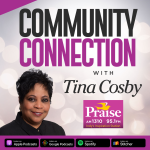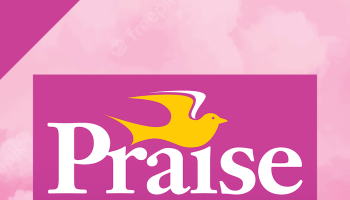From a one-day event, Black Friday has morphed into a four-day shopping extravaganza, and 51 percent of Americans say they plan to hit the mall or the keyboard sometime between the Friday and Monday after Thanksgiving. In fact, shopping activity promises to be equally hectic throughout the weekend, according to Consumer Reports’ latest holiday poll, the second of our three seasonal surveys of the nation’s shopping behavior.
Despite the convenience of online shopping, twice as many shoppers expect to do their Black Friday weekend buying at brick-and-mortar stores vs. the Internet. By and large, they expect the same deals online as they do in stores. What will they be snagging? Based on our poll, seven of 10 consumers will be sniffing out bargains on clothes, electronics (notably video games and accessories), and toys. But they won’t necessarily be buying presents for family, friends, and co-workers. Two-thirds of gift shoppers said they will be looking to treat themselves.
Over the past four years, the percentage of people who shop at stores on Black Friday has been slightly but steadily declining, based on our poll results. At the same time, more consumers are delaying their shopping in general until closer to the holidays. As of Nov. 8, 36 percent of Americans had started buying gifts compared to 38 percent at this time last year. Over the past three years, the percentage of people who began shopping early in November appears to be trending downward, decreasing slightly each year, from a high of 45 percent in 2006.
Regardless of how much shopping you have left to do, here’s our advice for Black Friday and beyond:
• Determine if the sales are truly irresistible. No doubt you can score some incredible bargains on Black Friday by getting up extra early or staying up past your bedtime to take in the midnight madness sales. But are the deals so incredible that they’re worth battling massive crowds and losing sleep over? Like last year, competition for your shopping dollar is unusually keen, and retailers have been running aggressive promotions for months. So, if you miss out on one doorbuster, rest assured another will surely come along. This year, we’ve seen no shortage of so-called one-day sales that were extended.
• Is it worth breaking down the ‘door’? Black Friday earned its reputation as a bargain-hunter’s paradise because retailers feature a few high-profile items at or below cost to draw you in. Such doorbuster specials are typically offered in limited quantities. Don’t bother to show up unless you’re willing to wait on line, sometimes for hours before the store opens, and brace yourself for disappointment. There are no guarantees you’ll snatch that $250 laptop, and stores don’t normally issue rain checks for their hottest deals.
• Get a jump of the bargains. There’s no shortage of Web sites that obtain and publish advance notice of Black Friday deals. Many of the hot specials are already listed on http://www.fatwallet.com, http://www.bfads.net,www.gottadeal.com, http://www.walletpop.com, http://www.dealtaker.com, http://www.theblackfriday.com, andwww.blackfridayads.com. The sites often feature downloadable circulars and coupons, too. You can also find out which products come with rebates and which merchants offer free shipping.
• Is it cheaper online? If you find a seemingly good deal in a flyer, visit a price-comparison Web site to determine whether you can get it cheaper elsewhere from a reliable seller. Some sources worth checking: http://www.nextag.com, http://www.bizrate.com, http://www.shopping.yahoo.com, http://www.pricegrabber.com, http://www.pricescan.com, http://www.shopzilla.com, http://www.nextag.com, and http://www.dealtime.com. You might want to try Amazon.com, too, as our reader surveys have cited Amazon as a good merchant for appliances, electronics, and books. There are other plusses to online shopping. The three most compelling, according to our holiday poll: convenience, to avoid holiday crowds, product selection.
• Are there bonus discounts? When you shop online and click to the checkout page, you’ll usually see a box to enter a discount or promotional code. These underused codes can be a source of unexpected savings, from an additional 25 percent off to a free pizza. Many of the sites that feature Black Friday ads also provide access to the codes. So do other sources such as http://www.couponcabin.com,www.couponcraze.com, http://www.couponalbum.com, http://www.savings.com, http://www.keycode.com, http://www.shoppersresource.com, http://www.couponwinner.com, and http://www.promotionalcode.com.
• Visit the retailer’s Web site. When you sign up for e-mail alerts from your favorite stores, you’ll receive notification of upcoming sales and often be targeted with exclusive coupons not readily available to everyone. Shoppers can also learn if the products they want are stocked and available. In addition, many retailers will let you purchase the item online and pick it up locally. Some retailer sites also feature coupon codes.
• Request a price guarantee. If you want to maximize savings, ask if the retailer has a low-price guarantee, entitling you to a refund of the difference between the new price and what you paid if the item goes on sale or if you find it for cheaper elsewhere. Seven to 15 days are the norm for most price adjustments. Also note that most price-matching policies apply to the price charged by a “local” competitor. So if you see a cheap deal on TV from Amazon.com, don’t expect Best Buy or HH Gregg to meet it.
• Get extra savings through instant charge cards. For big purchases, consider opening up an instant store charge card to receive an extra 10 percent off at the checkout. Then pay the balance immediately and cut up the card. More than 13 million Americans are still carrying debt from the 2008 holidays, our poll revealed. So don’t take out a credit card if will encourage you to overspend.
• Eye return policies carefully. Most merchants extend the return period for holiday purchases, but they reserve the right to refuse to take back anything without a receipt or gift receipt, especially if the item was bought with cash. Even if a store agrees to take an item back without a receipt, you’ll probably receive a gift card or store credit only. And you’ll get back the lowest price the item actually sold for, not necessarily what you paid for it. You’ll also need your receipt for warranty service.
• Protect yourself. Read a Web site’s privacy policy. It might tell you that the site sells customer data, which could generate spam. Look for a lock icon (denoting a secure site), but be sure it’s in the correct location, which reduces the chances it’s a fake. It shouldn’t be on the Web page itself, but in the browser on the lower right corner. Web sites beginning with “https” not just “http” provide added security, too. It’s also smart to use a single credit card for all online purchases to minimize the potential fallout from identity theft. Alternatively, you could request a temporary ‘virtual’ credit card from your card issuer, which is valid for a single purchase. Another alternative: use PayPal, which conceals your credit-card information in a transaction. Avoid using a debit card for online transactions because you’re not protected as well as you are with a credit card.
according to yahoo.com















